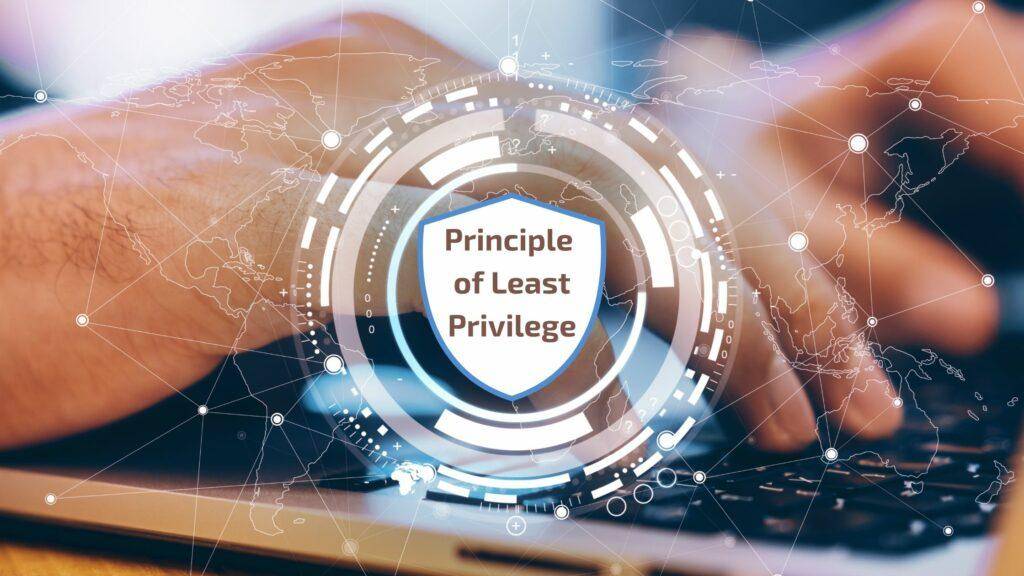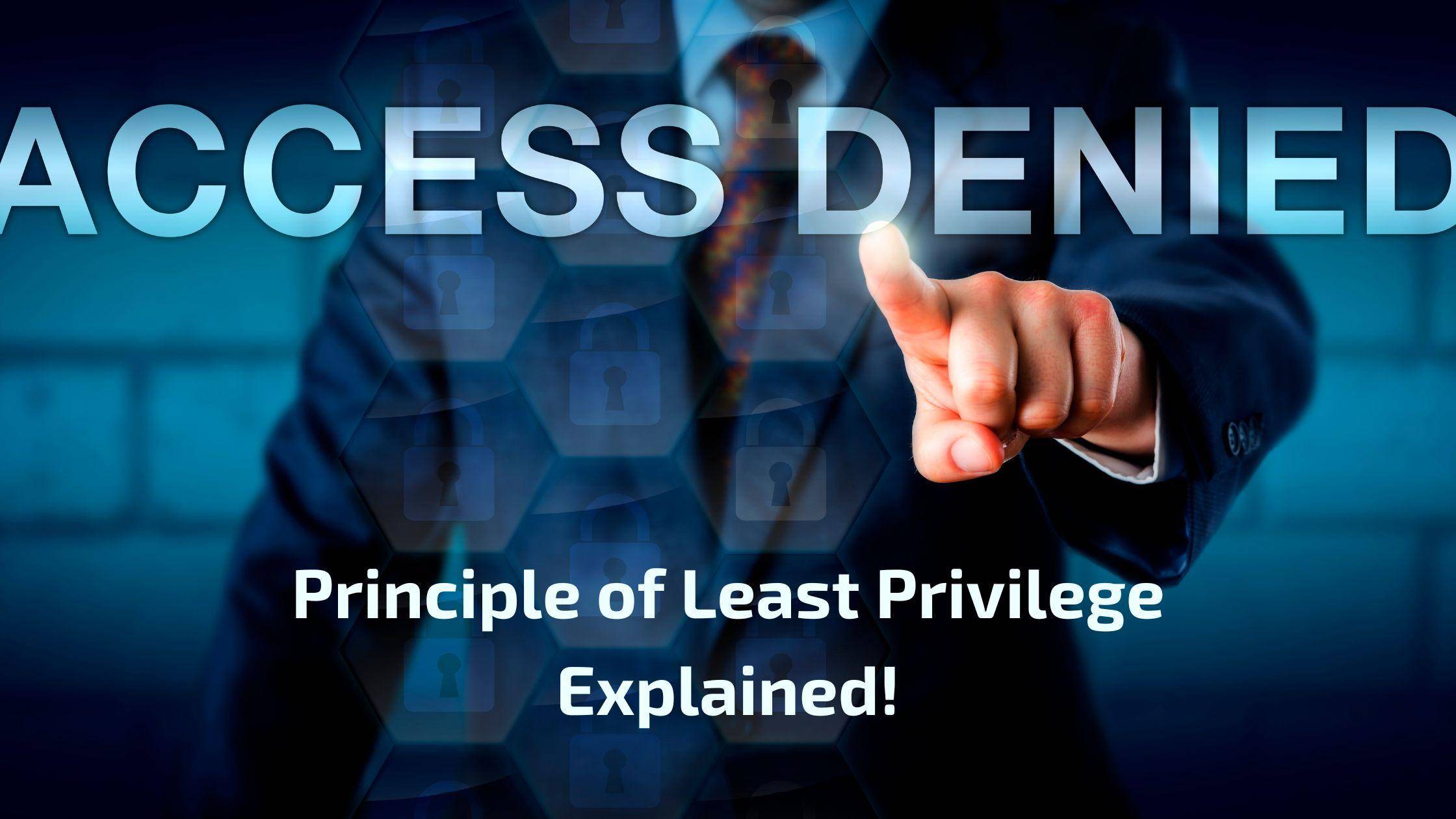Table of Contents
ToggleWhat Is the Principle of Least Privilege & Why Do You Need It?
What Is the Principle of Least Privilege?
The Principle of Least Privilege [POLP] is a Security Policy that restricts access to the bare minimum privileges required to perform routine activities. In other words, it ensures that users and applications have as few permissions as possible, allowing them only enough access to do their job.
The principle of least privilege has been around since 1972, but its origins stretch back much further. One of the earliest recorded uses was by Thomas Jefferson while he served as Secretary of State under President George Washington during the American Revolution. Jefferson advocated for this idea in his proposed “Meyer’s Rules,” which aimed at preventing breaches like those experienced by Britain during its war with France in 1793-1802.
The principle of least privilege is based on the idea that each user should have only those rights needed for their tasks and nothing more. For example, if a user has permission to view data on a network share but not modify it, any malware or hacker who gains control of this user’s account will be limited in what they can do with your Organization’s data. If you use one account for many different tasks (such as accessing email from multiple devices), then it’s important that these accounts don’t automatically inherit each other’s permissions when you add them together.
The earliest known reference to the “least privilege” concept can be found in a 1949 paper by R. C. Albertson and A. E. Halseth titled “A Method for Improving the Reliability of Multi-programmed Computer Systems.” In their study, Albertson and Halseth argued that “a program cannot perform its task unless it has the minimum privileges required for that task.”
This idea was later refined by security researchers Bellovin and Merritt in their 1988 paper, “Defences Against System Crackers: An Evaluation of Existing Practice,” where they describe how to apply this concept to computer systems using Access Control Lists [ACLs]. This marked an important step forward in establishing principles guiding IT security practices such as least privilege because it provided guidelines on how best to implement ACLs at a technical level while still maintaining flexibility when dealing with various types of applications or users within an Organization’s network environment.
As for why you should use the principle of least privilege, it makes your Organization much more secure by reducing the potential attack surface and preventing users from making accidental mistakes. It’s also more efficient because there are fewer processes and users with excessive rights who could cause problems like Denial-of-Service [DOS] attacks or network outages.
The best way to implement this principle is by granting only those resources that are needed for specific tasks; however, many Organizations still give admins full control over everything in their environment, which can lead to dangerous situations where malicious actors gain backdoor access through careless acts such as overloading an application server or database server with too many requests.
How does the Principle of Least Privilege work?
By minimizing the number of people who have admin rights, for example, hackers can’t get far even if they manage to infect one user or machine with malware or ransomware.
POLP helps reduce the attack surface of your Organization by minimizing the number of people who have admin rights. This is important because it makes it more difficult for hackers to get far even if they manage to infect one user or machine with any kind of malware.
It also prevents accidental mistakes, such as a non-admin user accidentally compromising their system through a malware-infected USB drive. If you don’t give that person those permissions, they can’t do any damage: they won’t be able to run processes with excessive privileges or grant other users additional access.
Finally, POLP reduces the number of processes and users with excessive rights because every process and service has limited permissions by default. This means that even if someone were able to run an exploit successfully on your server (which would be very difficult), they wouldn’t have enough privileges in order to do any damage beyond what was intended when the program was designed–and any changes made by those exploits will be contained within those limited permissions anyway!
If a bulk of your employees have admin accounts, one infected machine will quickly spread throughout your network and into other accounts—this could easily wipe out years’ worth of data in just a few hours.
The concept has been around since 1972, but it didn’t become a formalized recommendation until 2005 when NIST published Special Publication 800-162: Guidelines for Media Sanitization, followed by the Guide to Industrial Control System [ICS] Security in 2011.
The idea behind this principle is simple: if you give users admin accounts, they can do anything they want with your system. You don’t want all your eggs in one basket; instead, spread them out over multiple machines (or even locations). Additionally, you should consider segregating sensitive data from non-sensitive data: don’t store all your company’s confidential documents on one machine that also contains employee payroll information or client contact lists!
It’s crucial to follow best practices when implementing the principle of least privilege , but many Organizations struggle to do so manually due to Organizational silos, user access reviews, or simply not having enough time.
This can cause problems because manual processes are inefficient for a number of reasons. For example: User access reviews often require manual approval from multiple people who don’t interact with each other regularly (i.e., HR and IT). This can create delays in approving new permissions and in updating roles as needed—it even introduces human error into the process by making it more difficult for both parties to communicate effectively.
Principle of least privilege benefits

Principle of least privilege is a risk management strategy that minimizes the number of people who have access to resources on a computer system, network or application. It also limits what they can do with those resources, such as reducing permissions so that only a handful of processes are allowed to run or changing file and folder permissions so users can only see what’s inside them.
The principle was originally intended for large Organizations with many employees, but it’s just as important for small businesses and home offices. Here are some benefits you might experience if you use principle of least privilege:-
- Minimizes the likelihood of a cyberattack or data breach.
- Improves productivity by making it easy for employees to access the right information and tools when they need them.
- Reduces costs associated with managing systems, networks and applications.
- Increases the ability to detect and respond to security incidents by reducing the complexity of IT environments.
- Helps ensure compliance with industry regulations such as PCI DSS, SOX and FISMA.
- Reduces the likelihood of human error by reducing the complexity of IT environments.
- Prevents unauthorized access to sensitive data by limiting the amount of user access.
Learn why it’s important to properly implement the principle of least privilege:
The principle of least privilege is a security control that helps you to reduce the risk of your system being compromised. The less privilege each user has, the smaller the attack surface and therefore, the smaller chance that a vulnerability can be exploited.
By granting only those users who actually need them and by restricting their use to specific tasks, you ensure that only authorized users have access to certain parts of the system and its resources. This way, if an attacker were to gain access to your system through an exploit in one area (which they usually will), they would still not be able to perform malicious actions in other areas that they do not have permissions for.
Conclusion
The principle of least privilege is a cornerstone of security and risk-management practices. It’s been around for decades and continues to be the foundation for many Organizations’ IT strategies today. In short, it’s critical that you understand how POLP works—so that you can use it effectively in your Organization. Learn how to make your Risk Management effective to avoid Cyber Threats by reading our Article of Effective Risk Management.
FAQs
1. What is the key benefit of the privilege approach to security?
The key benefit is that it makes sure that a user or application only has access to the data and functions that it needs and nothing more. This reduces the risk of unauthorized access to sensitive information, accidental or intentional damage to critical systems, and other types of security breaches.
2. What is the intent of least privilege?
The intent of least privilege is to limit a user’s access to only what is necessary. This reduces the risk of unauthorized access to sensitive information, accidental or intentional damage to critical systems and other types of security breaches.
3. What violates the principle of least privilege?
It is not uncommon for people to have more access than they need, or for the IT department to give non-technical users access to sensitive data. It is also common for employees to use personal devices and applications at work, which can lead to data leaks. If a user needs access only to certain systems or applications, then those should be where their accounts are granted privileges. This limits their ability to cause damage in other areas that they may have been able to access but shouldn’t have been able to. This can help to ensure that sensitive data is not compromised by an unauthorized user who has gained access through some other means.
4. How do you implement the least privilege?
The first step is to identify the different types of users in your Organization. This may include IT staff, administrators and support staff, external contractors who work with your systems on a regular basis, salespeople or other individuals who use software to access data but don’t have any need for administration rights.
Next, you’ll want to determine which privileges each type of user needs in order to do their jobs effectively. For example, if a salesperson needs access to customer records but not financial data or other sensitive information, you could give them read-only access to some files and full read/write rights on others.
Finally, you’ll want to decide what level of access each user has in general. For example, if you have a new employee who needs to work on some projects but doesn’t need full administrator rights yet, you can set their account up with just the privileges they need for their job. This way, if someone leaves the company and takes their access with them (or is fired), it will be easier to create new accounts for new employees without having to worry about data security or privacy issues.





